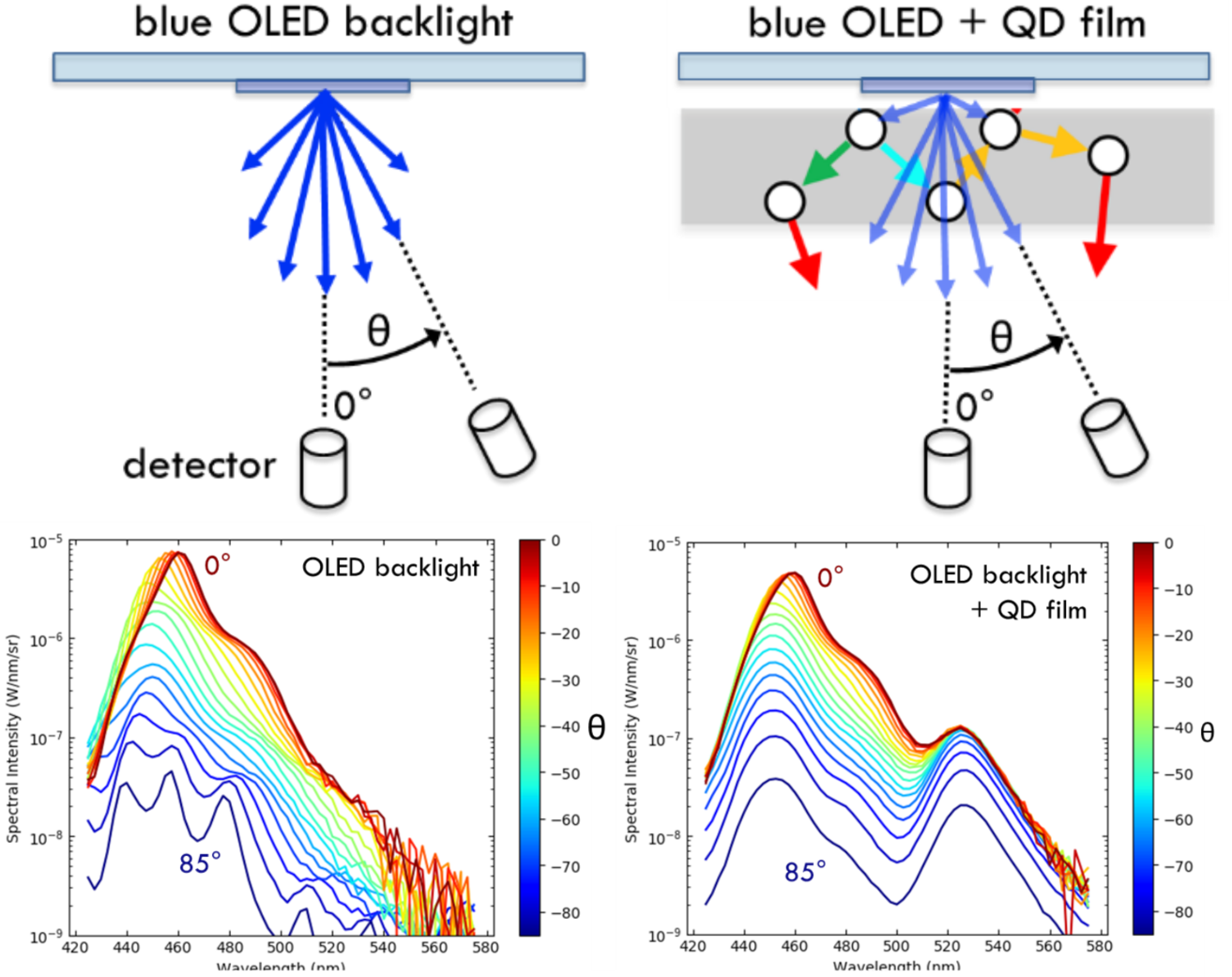
Publications
Here you will find research Research papers enabled by Fluxim’s development tools

Photon Recycling in Perovskite Solar Cells Assessed by a Detailed-Balance Compatible Dipole Emission Model
A theoretical description of light emission, propagation, and re-absorption in semiconductor multilayer stacks is derived based on the transverse Green’s function of the electromagnetic field in the presence of a complex dielectric. The framework obtained is shown to reproduce the generalized Kirchhoff relations between the luminescent emission from metal halide perovskite slabs under uniform excitation and the slab absorptance of light with an arbitrary angle of incidence. Finally, consistent treatment of re-absorption provides the local rate of secondary photogeneration required for the consideration of photon recycling in an optoelectronic device simulator that includes the effects of charge transport.

Light Conversion using Perovskite Quantum Dots
Quantum dots are crystalline semiconductor particles with a size of a few nanometers. The nanocrystal properties are essentially determined by their size.
This blog post will present the main properties of quantum dots and their application. Moreover, it gives an example of how to characterize films with embedded quantum dots using our angular resolved spectrometer Phelos, together with our electro-optical simulation software Setfos.

TADF OLEDs and Hyperfluorescent OLED Simulation with Setfos
Fluorescence‐based organic light‐emitting diodes (OLEDs) using thermally activated delayed fluorescence (TADF) have increasingly attracted attention in research and industry. Even though the experimental realization of this concept has demonstrated promising external quantum efficiencies, the full potential of this approach has not yet been assessed. To this end, a comprehensive electro‐optical device model accounting for the full exciton dynamics, including triplet harvesting and exciton quenching is presented.
